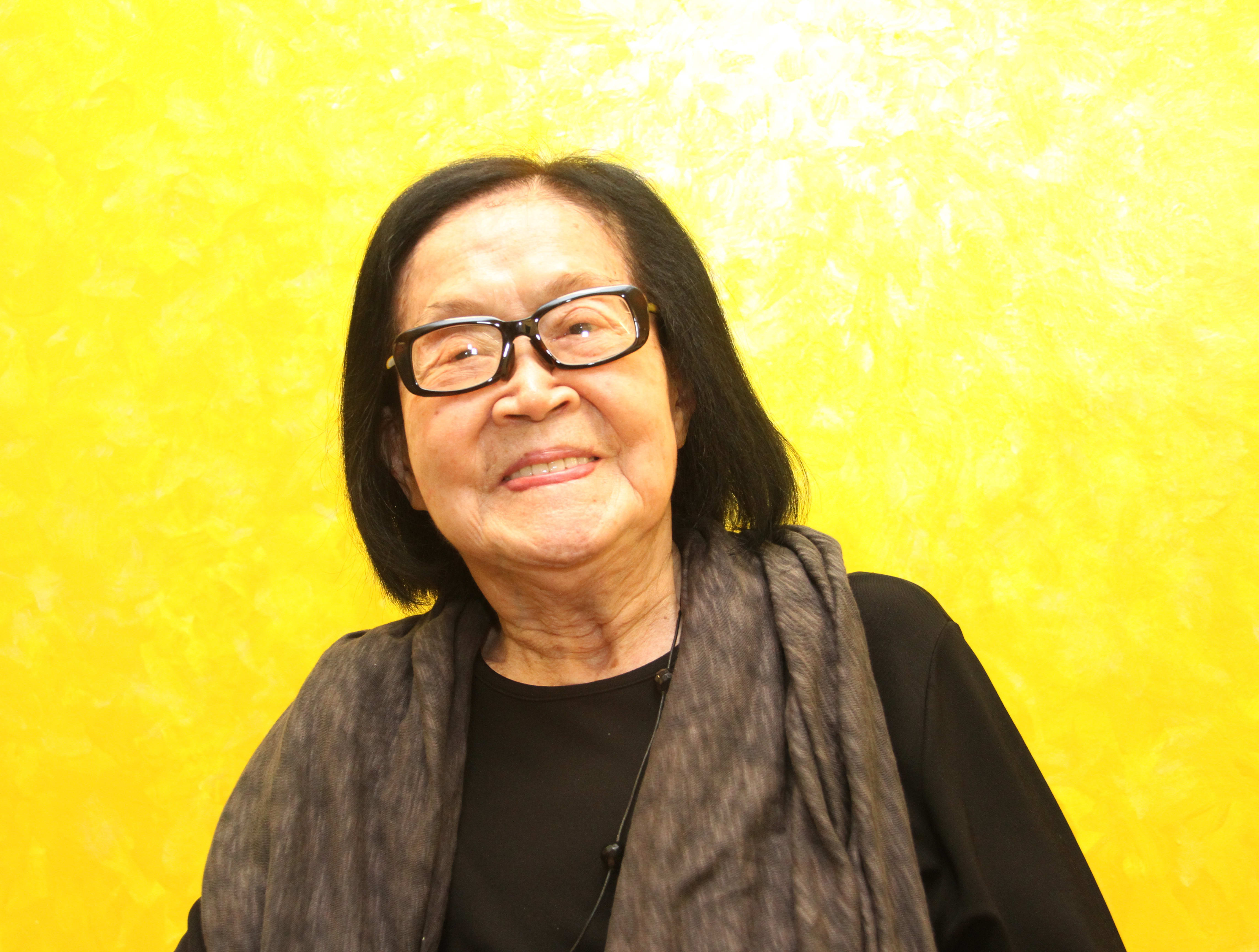-
tomie ohtake
cross-cuts | nara roesler ny | february 09 – 13
-
-

Tomie Ohtake, Untitled, 2013
tubular carbon steel painted with automotive paint218 x 40 cm / 85.8 x 15.7 in
-

Tomie Ohtake, Untitled, 2013
tubular carbon steel painted with automotive paint
260 x 120 x 140 cm / 102.4 x 47.2 x 55.1 in
-
-

Tomie Ohtake, Untitled, 2010
acrylic paint on canvas
150,5 x 100,5 x 3,5 / 59.3 x 39.6 x 1.4 in
-
The fluidity of color fields and lines are leitmotifs of her work as well as essential elements of her late production, both painterly and sculptural, as shown here. Lines that surge from the density of absolute color, dancing and shaping wavy visual fields were ultimately materialized by Ohtake in her last body of work, as free sculptural lines in space: a poetic, lasting message written in the air.
-

Tomie Ohtake, Untitled, 2013
tubular carbon steel painted with automotive paint
115 x 200 x 210 cm / 45.3 x 78.7 x 82.7 in
-

Tomie Ohtake
b. in 1913, Kyoto, Japan
d. in 2015, São Paulo, SP, Brazil
One of the main representatives of abstract art in Brazil, Tomie Ohtake was born in Kyoto in 1913, and moved to Brazil in 1936. Her career as an artist began at the age of 37, when she became a member of the Seibi group, which brought together artists of Japanese descent. In the late 1950s, when she left behind an initial phase of figurative studies in painting, she immersed herself in abstract explorations. In this phase, she performed a series of paintings which became known as blind paintings, where she would blindfold herself in experiments that challenged the ideas which grounded the Brazilian Neo-concrete movement, also bringing sensibility and intuition to the fore of her practice.
In 1957, invited by critic Mário Pedrosa, she presented her first solo exhibition at the Museu de Arte Moderna in São Paulo, which was followed by her participation in the São Paulo Biennial in 1961. Ohtake began to experiment with various printmaking methods during the 1970s and, beginning in the late 1980s, undertook large-scale sculptural projects and public works in São Paulo and neighboring cities. Having worked until very late in life, Tomie Ohtake passed away in 2015, when she was 101 years old.
Tomie Ohtake | photo: Denise Andrade
Tomie Ohtake's work has been widely exhibited internationally, notably participating in major presentations such as the XI Biennale de Venezia, in Venice, Italy (1972); the I and II Bienal Latino-Americana (Sala Especial), in Havana, Cuba (1984 and 1986); the V Bienal Internacional de Cuenca (Sala Especial), in Cuenca, Ecuador (1996); and eight editions of the Bienal Internacional de São Paulo, in São Paulo/SP, Brazil. Throughout her long and prolific career, she was the subject of numerous solo exhibitions, including several shows at Museu de Arte Moderna de São Paulo the first being in 1957; other major exhibitions include: Tomie Ohtake: Retrospectiva, 30 anos de trabalho, at Museu de Arte de São Paulo Assis Chateaubriand (MASP), in São Paulo/SP, Brazil (1983); Novas Pinturas, at Museu de Arte Moderna do Rio de Janeiro (MAM-RJ), in Rio de Janeiro/RJ, Brazil (1993); Retrospectiva, at Hara Museum of Contemporary Art, in Tokyo, Japan (1988); New Paintings, at Barbican Center, in London, UK (1994); Retrospectiva, at Instituto Tomie Ohtake, in São Paulo/SP, Brazil (2001); and Pinturas Cegas, at Fundação Iberê Camargo, in Porto Alegre/RS, Brazil (2012). Group exhibitions include: Oito décadas de abstração informal—Coleções Museu de Arte Moderna de São Paulo e Instituto Casa Roberto Marinho, with itinerancy at Instituto Casa Roberto Marinho, in Rio de Janeiro/RJ, Brazil; and Museu de Arte Moderna de São Paulo (MAM-SP), São Paulo/SP, Brazil (2018); The World is our Home. A Poem on Abstraction, Para Site, Hong Kong, China (2015); and FUSION: Tracing Asian Migration to the Americas Through AMA’s Collection, Art Museum of the Americas, Washington, D.C., USA (2013); amongst many others. Tomie Ohtake’s work is also part of various permanent collections worldwide, including: Hara Museum of Contemporary Art, Tokyo, Japan; Metropolitan Museum of Art, New York/NY, USA; Museu de Arte de São Paulo Assis Chateaubriand (MASP), São Paulo/SP, Brazil; Museu de Arte Moderna de São Paulo (MAM-SP), São Paulo/SP, Brazil; Museu de Arte Moderna do Rio de Janeiro (MAM-RJ), Rio de Janeiro/RJ, Brazil; Patricia Phelps de Cisneros Collection, Caracas, Venezuela; Pinacoteca do Estado de São Paulo, São Paulo/SP, Brazil; Tate Gallery, London, UK; and Dallas Museum of Art, Dallas/TX, USA, among many others.




